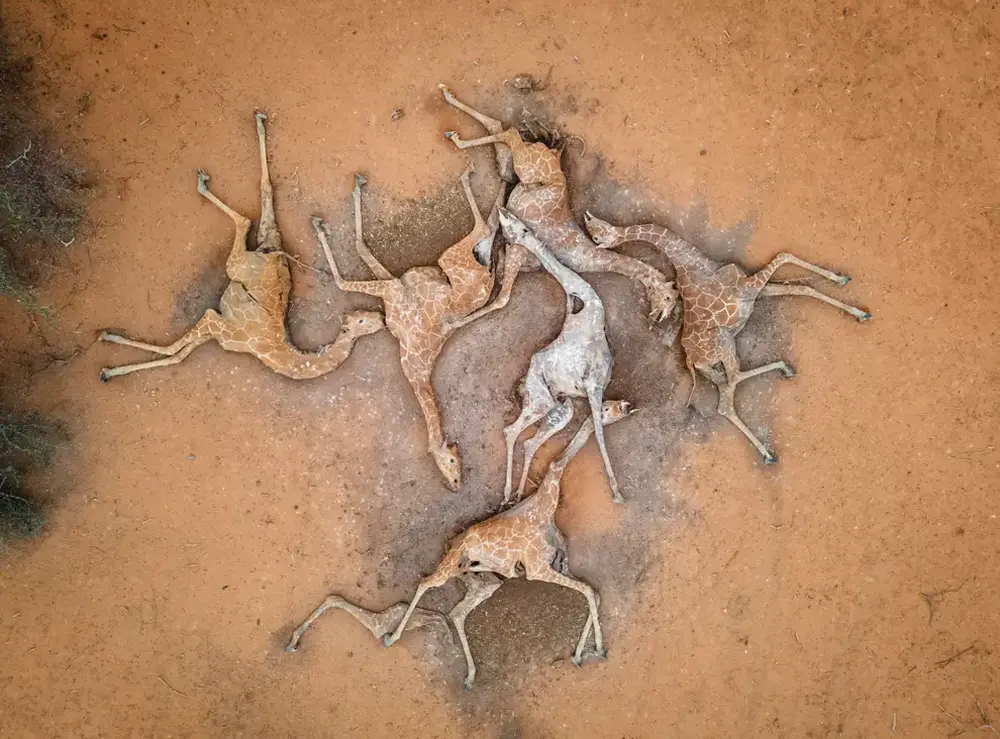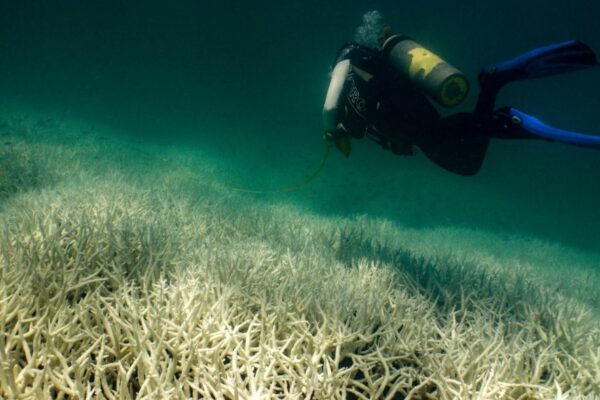Horrific Image of Six Dead Giraffes Amid Kenya Drought Goes Viral
Kenya has been facing a humanitarian crisis amid one of its most devastating climate change-induced droughts as rivers have dried up and vegetation perished
Six dead giraffes lie on the patch of dry and parched earth, lying in a spiral in Sabuli Wildlife Conservancy in Kenya’s Wajir County. The aerial shot was captured by the photojournalist Ed Ram, showing the horrific reality of Kenya’s drought that has left people and animals grappling for food and water. This image of six dead giraffes amid the Kenya drought has sent shockwaves across the world!
Many parts of the country have not received any rain in over a year. The rivers have dried up and the vegetation is lifeless in the region. The picture shows the withered and interwoven bodies of the animals.

Image: Ed Ram
These photographed animals died after they got stuck in the mud while trying to drink from a nearby, almost dried-up reservoir. Apparently, the animals were already weak from starvation and thirst, consequently, succumbed to death. The carcasses were moved to the periphery of Eyrib village of the county to prevent any contamination to the reservoir water, which is pretty much gone at this point but is still quenching the thirst of many.
While the domesticated animals are being taken care of, wildlife is suffering. According to an assessment by the local Star news website, 4,000 giraffes were at risk from the severe drought in Garissa County. Ibrahim Ali, from the Bour-Algi giraffe sanctuary, said that the situation had been exacerbated due to farming activities alongside the river banks, cutting the animals off from their drinking spots.
Moreover, an estimated 2.1 million people in the country face food insecurity due to the drought. The UN also said that 2.9 million people were in urgent need of humanitarian aid as some areas in Kenya had reported their worst rainfall in decades and there was no means of surviving amid depleting resources.
The UN Office for the Coordination of Humanitarian Affairs said;
Water sources for both people and livestock have dried up, forcing families to walk longer distances and causing tensions among communities, which has led to an increase in intercommunal conflict.
Six #giraffes lie dead in Sabuli Wildlife Conservancy in Wajir, #Kenya. The giraffes, weak from lack of food and water caused by severe #drought, died after getting stuck in mud as they tried to drink from a nearly dried-up reservoir nearby. Shot for @GettyImages #climatechange pic.twitter.com/m0efTloXBk
— Ed Ram (@EdR4m) December 13, 2021
Via: Independent


